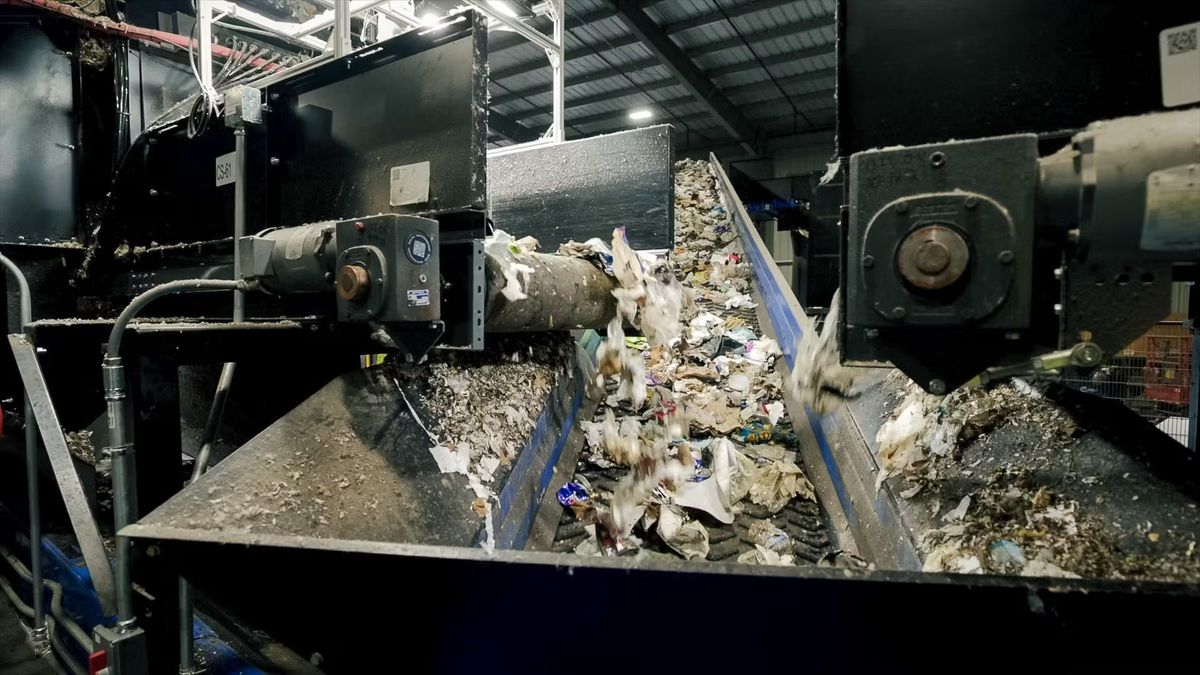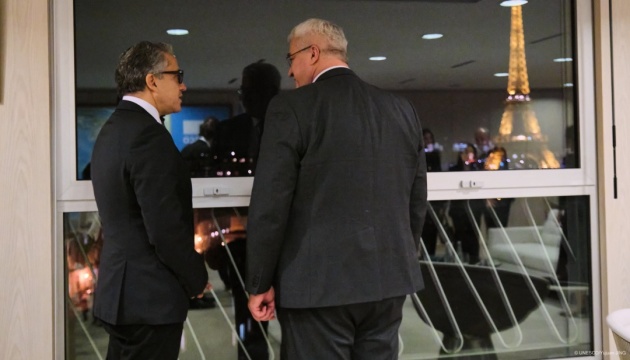SPSA approves $200M AI-powered waste sorting contract – The Suffolk News-Herald

Report on SPSA’s Strategic Investment in Sustainable Waste Management
Executive Summary
The Southeastern Public Service Authority (SPSA) Board of Directors has unanimously approved a 20-year, $200 million contract with Commonwealth Sortation LLC. This strategic initiative is designed to implement an advanced, AI-driven waste sorting system across its eight member localities. The project’s primary objectives are to double regional recycling rates and extend the operational lifespan of the Regional Landfill to 2095, directly aligning with key United Nations Sustainable Development Goals (SDGs) concerning urban sustainability, responsible production, and climate action.
Technological Implementation and Diversion Goals
The contract facilitates the establishment of an Alternative Waste Disposal (AWD) system utilizing cutting-edge technology to enhance resource recovery.
- Technology Suite: The system will employ a combination of artificial intelligence, robotics, and advanced camera systems to sort municipal solid waste.
- Process: Recyclable and organic materials will be recovered directly from the general waste stream, streamlining the recycling process for residents.
- Diversion Targets: The initiative aims to divert 50% of all incoming waste from landfill disposal. This target is broken down as follows:
- Recovery of 20% of the waste stream as recyclable materials.
- Recovery of 30% of the waste stream as organic material for repurposing.
Alignment with Sustainable Development Goals (SDGs)
This long-term agreement represents a significant regional commitment to achieving global sustainability targets. The project’s framework and objectives are closely integrated with several SDGs:
- SDG 11: Sustainable Cities and Communities: By extending the life of the Regional Landfill to 2095, the project directly addresses Target 11.6, which aims to reduce the adverse per capita environmental impact of cities, including by paying special attention to municipal and other waste management. It ensures long-term waste management security for 1.2 million residents.
- SDG 12: Responsible Consumption and Production: The core mission to double recycling rates and divert 50% of waste from landfills is a direct contribution to Target 12.5, which calls for substantially reducing waste generation through prevention, reduction, recycling, and reuse. The AWD system creates a circular economy model where waste is transformed into valuable resources.
- SDG 9: Industry, Innovation, and Infrastructure: The adoption of an AI- and robotics-based sorting facility represents a major upgrade to regional infrastructure. This aligns with Target 9.4, which encourages the adoption of clean and environmentally sound technologies and industrial processes to make industries more sustainable.
- SDG 13: Climate Action: Diverting 30% of the waste stream as organic material is a critical climate mitigation strategy. This process prevents the decomposition of organic matter in the landfill, which would otherwise generate methane, a potent greenhouse gas, thereby contributing to climate action.
Projected Outcomes and Regional Impact
The implementation of the AWD system is projected to deliver substantial environmental and economic benefits to the region.
- Enhanced Landfill Longevity: The project is critical for avoiding the projected 2060 capacity limit of the Suffolk landfill, preventing the high economic and environmental costs associated with transporting waste to distant private facilities.
- Increased Recycling Efficacy: The system will capture a significant portion of the 25% of recyclable materials that currently end up in landfills, even in communities with active curbside programs.
- Universal Recycling Participation: All residents in the member communities will effectively become recyclers without any change in their current waste disposal habits, ensuring comprehensive regional participation.
- Improved Service Equity: Localities such as Franklin and Southampton County, which have discontinued local curbside recycling, will gain access to a highly effective and streamlined regional recycling solution.
1. Which SDGs are addressed or connected to the issues highlighted in the article?
The article discusses a new regional strategy for waste management that connects to several Sustainable Development Goals (SDGs) focused on urban living, responsible resource management, and technological innovation.
- SDG 11: Sustainable Cities and Communities: The project is a regional initiative involving eight localities and 1.2 million people, directly addressing municipal waste management to improve the sustainability of these communities.
- SDG 12: Responsible Consumption and Production: The core objective is to alter how waste is processed by doubling recycling rates and repurposing organic materials, which promotes sustainable production and consumption patterns by reducing waste.
- SDG 9: Industry, Innovation, and Infrastructure: The article highlights a significant investment in new infrastructure and technology, specifically the implementation of “artificial intelligence-based waste sorting,” to create a more efficient and sustainable waste management industry.
2. What specific targets under those SDGs can be identified based on the article’s content?
The article’s content points to specific targets within the identified SDGs:
-
SDG 11: Sustainable Cities and Communities
- Target 11.6: By 2030, reduce the adverse per capita environmental impact of cities, including by paying special attention to air quality and municipal and other waste management. The article directly addresses this target by describing a plan to manage municipal solid waste more effectively for “all 1.2 million people who live in our member communities.” The goal is to extend the landfill’s life to 2095, thereby reducing the long-term environmental burden of waste.
-
SDG 12: Responsible Consumption and Production
- Target 12.5: By 2030, substantially reduce waste generation through prevention, reduction, recycling and reuse. The project’s primary goal is to “double recycling rates” and divert “50% of incoming waste” from landfill disposal. This directly aligns with reducing waste generation through enhanced recycling (recovering “20% as recyclables”) and reuse (repurposing “30% as organic material”).
-
SDG 9: Industry, Innovation, and Infrastructure
- Target 9.4: By 2030, upgrade infrastructure and retrofit industries to make them sustainable, with increased resource-use efficiency and greater adoption of clean and environmentally sound technologies and industrial processes. The “$200 million contract” to implement a system using “AI, robotics, and cameras” is a clear example of upgrading infrastructure with clean and efficient technology to make the waste management industry more sustainable.
3. Are there any indicators mentioned or implied in the article that can be used to measure progress towards the identified targets?
Yes, the article provides several specific, quantifiable indicators that can be used to measure progress:
-
Indicators for SDG 11 (Target 11.6) and SDG 12 (Target 12.5)
- Percentage of waste diverted from landfills: The article states the process is designed to “divert 50% of incoming waste.” This is a direct indicator of reducing the environmental impact of municipal waste.
- Recycling rate: A key objective is to “double recycling rates.” The system aims to recover “20% as recyclables” from the total waste stream. This measures the proportion of solid waste that is recycled.
- Organic material recovery rate: The plan is to repurpose “30% as organic material,” which can be tracked as an indicator of waste reduction and reuse.
- Landfill lifespan: The project aims to extend “the life of the Regional Landfill in Suffolk through 2095,” a clear long-term indicator of successful waste management.
- Reduction in recyclables sent to landfill: The article notes that currently “over 25% of recyclable materials still end up in landfills.” A reduction in this percentage would be a key performance indicator.
-
Indicators for SDG 9 (Target 9.4)
- Investment in sustainable infrastructure: The “$200 million contract” is a financial indicator of the investment being made to upgrade infrastructure.
- Adoption of advanced technology: The implementation of the “AI, robotics, and cameras” system across the region serves as an indicator of the adoption of clean and environmentally sound technologies in the waste management industry.
4. Create a table with three columns titled ‘SDGs, Targets and Indicators” to present the findings from analyzing the article. In this table, list the Sustainable Development Goals (SDGs), their corresponding targets, and the specific indicators identified in the article.
| SDGs | Targets | Indicators |
|---|---|---|
| SDG 11: Sustainable Cities and Communities | 11.6: Reduce the adverse per capita environmental impact of cities, including by paying special attention to… municipal and other waste management. |
|
| SDG 12: Responsible Consumption and Production | 12.5: Substantially reduce waste generation through prevention, reduction, recycling and reuse. |
|
| SDG 9: Industry, Innovation, and Infrastructure | 9.4: Upgrade infrastructure and retrofit industries to make them sustainable…and greater adoption of clean and environmentally sound technologies. |
|
Source: suffolknewsherald.com
What is Your Reaction?
 Like
0
Like
0
 Dislike
0
Dislike
0
 Love
0
Love
0
 Funny
0
Funny
0
 Angry
0
Angry
0
 Sad
0
Sad
0
 Wow
0
Wow
0




















































.jpg.webp?itok=0ZsAnae9#)
























